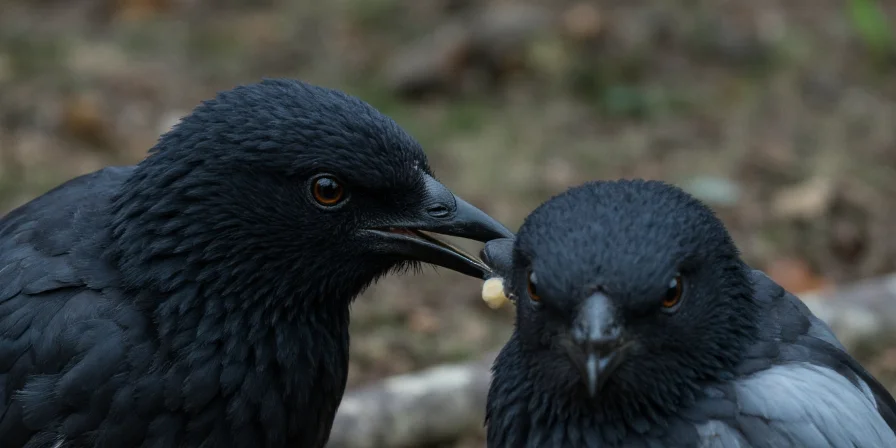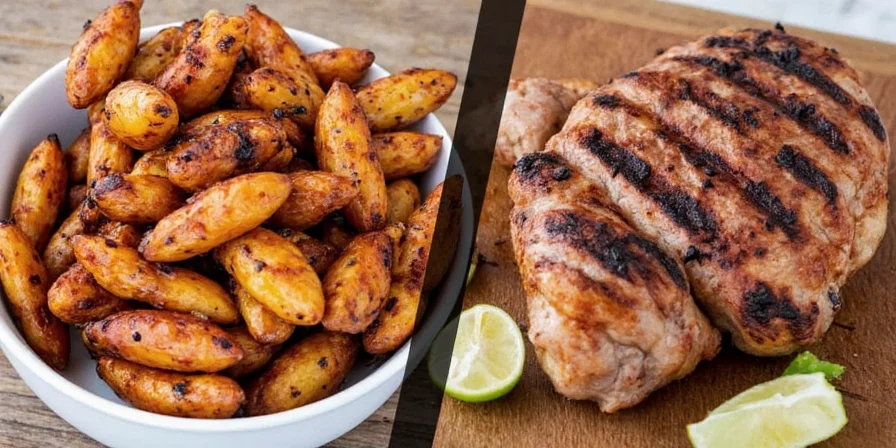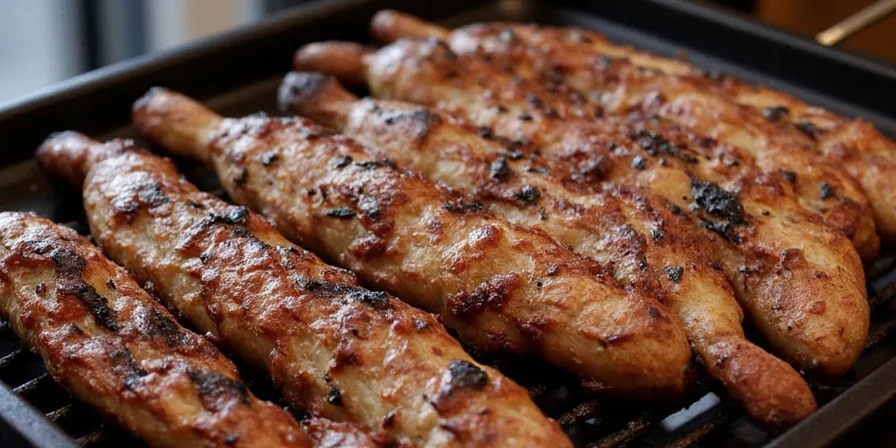The fundamental difference between grilled and blackened chicken lies in cooking method and spice application. Grilled chicken uses direct heat (350-450°F) with seasoning applied before cooking, while blackened chicken requires a thick spice crust seared at extreme temperatures (500°F+) to create a flavorful char. This comprehensive guide details seven key distinctions every home cook should understand before choosing your next preparation method.
| Critical Factor | Grilled Chicken | Blackened Chicken |
|---|---|---|
| Primary Cooking Method | Direct flame/heat exposure | Cast-iron skillet searing |
| Temperature Range | 350-450°F | 500°F+ |
| Spice Application | Rub or marinade absorbed | Thick crust formation |
| Maillard Reaction | Moderate browning | Intense char development |
| Smoke Production | Minimal | Significant (requires ventilation) |
What's the Real Difference Between Grilled and Blackened Chicken?
Despite common confusion, these techniques differ fundamentally in execution and results. Grilled chicken achieves flavor through gradual absorption of smoke and seasoning during cooking over open flame. Blackened chicken relies on the "controlled burn" principle—where a thick spice layer undergoes rapid Maillard reaction and partial carbonization at extreme heat, creating complex flavor compounds impossible through grilling alone.
Professional chefs distinguish them by:
- Equipment requirements - Blackening demands cast-iron or carbon steel (not recommended for standard grills)
- Oil usage - Blackened requires minimal oil (spice crust provides non-stick properties)
- Cooking time - Blackened cooks 40-50% faster due to higher temperatures
- Smoke point considerations - Blackened spice blends avoid low-smoke-point ingredients


Culinary Science: How Temperature Creates Distinct Results
The critical distinction lies in thermal dynamics:
- Grilling (350-450°F) allows gradual protein denaturation with moderate Maillard reaction. This preserves natural juices while developing subtle caramelization.
- Blackening (500°F+) triggers rapid moisture evaporation, creating steam that lifts the spice crust slightly before intense searing occurs. This produces complex pyrazines and furans responsible for the characteristic "roasted" flavor profile.
Flavor Chemistry Comparison
| Compound Type | Grilled Chicken | Blackened Chicken | Sensory Impact |
|---|---|---|---|
| Pyrazines | Low concentration | High concentration | Nutty, roasted notes |
| Furans | Moderate | Very high | Caramelized sweetness |
| Thiophenes | Negligible | Pronounced | Savory umami depth |
Precision Cooking Techniques
Master each method with these scientifically-informed approaches:
- Grilling precision: Maintain consistent 375°F surface temperature. Insert meat thermometer at 45-degree angle to avoid false readings from grill grates.
- Blackening protocol: Heat skillet until water droplets dance (indicates 500°F+). Apply spice blend 1/8" thick—any thinner won't create proper crust formation.
- Critical timing: Blackened chicken requires exactly 2:15-2:45 minutes per side. Exceeding 3 minutes causes excessive charring; under 2 minutes prevents proper crust development.


Chemically-Optimized Spice Formulations
Professional blends consider ingredient smoke points and chemical interactions:
- Grilled Chicken Rub (optimized for gradual absorption):
- Paprika (smoke point 325°F) - provides color without burning
- Garlic powder (smoke point 300°F) - dissolves gradually
- Mustard powder (enhances Maillard reaction)
- ¼ tsp baking soda per cup (raises surface pH for better browning)
- Blackened Chicken Blend (designed for high-temp stability):
- Smoked paprika (smoke point 400°F) - withstands extreme heat
- Onion powder (smoke point 425°F) - higher smoke point than garlic
- ¼ tsp citric acid per cup (preserves spice integrity at high heat)
- Cayenne (added last to prevent premature degradation)
Molecular Pairing Principles
Match sides based on chemical interactions with each preparation method:
- For grilled chicken: Acidic components (lemon, vinegar) enhance perception of subtle grilled flavors through trigeminal nerve activation
- For blackened chicken: Fatty components (avocado, crema) bind to and neutralize excessive capsaicin while preserving complex flavor compounds
- Temperature rule: Serve blackened chicken with cool sides (below 70°F) to contrast the intense heat experience
Scientific Myth Busting
Debunking common misconceptions with culinary science:
- Myth: Blackened chicken is just burnt grilled chicken
- Reality: The crust contains specific flavor compounds (2-acetyl-1-pyrroline) created only through controlled high-heat searing—not achievable through grilling
- Myth: You need special "blackening" spice blends
- Reality: Standard Cajun blends work if adjusted for smoke points—omit garlic powder which burns at blackening temperatures
Decision Framework: Which Method to Choose
| Cooking Scenario | Recommended Method | Scientific Rationale |
|---|---|---|
| Thin cutlets (<1") | Grilled | Prevents overcooking during required blackening time |
| Thick cuts (>1.5") | Blackened | Creates flavor crust before interior overcooks |
| Indoor cooking | Blackened | Cast-iron provides more consistent indoor results than grill pans |
| Outdoor entertaining | Grilled | Avoids excessive indoor smoke while showcasing cooking process |
Final Assessment: Technical Considerations
Choose grilled chicken when prioritizing even cooking and subtle flavor development, particularly for thinner cuts or outdoor entertaining. Opt for blackened chicken when seeking complex flavor compounds through high-temperature Maillard reaction, especially with thicker cuts where crust formation prevents dryness. The decision ultimately depends on your equipment capabilities, ingredient thickness, and desired flavor chemistry profile—not merely personal spice preference.
Frequently Asked Questions
What's the scientific basis for blackened chicken's unique flavor?
Blackened chicken develops specific flavor compounds (pyrazines, furans, and thiophenes) through high-temperature Maillard reaction that don't form during standard grilling. The 500°F+ temperature triggers different chemical pathways than the 350-450°F range used in grilling.
Can I achieve authentic blackened chicken on a standard home grill?
No—home grills typically max out at 450-500°F, insufficient for proper blackening which requires 500-550°F. The cast-iron skillet's thermal mass and direct contact create the necessary conditions for authentic crust formation.
Why shouldn't I use garlic powder in blackened spice blends?
Garlic powder has a smoke point of 300°F and burns at blackening temperatures (500°F+), creating bitter acrylamides. Onion powder (smoke point 425°F) withstands the heat better while providing similar savory notes.
How does baking soda improve grilled chicken browning?
Baking soda raises surface pH, accelerating the Maillard reaction. Use ¼ tsp per cup of rub—any more creates saponification that produces soapy flavors.











 浙公网安备
33010002000092号
浙公网安备
33010002000092号 浙B2-20120091-4
浙B2-20120091-4